The figure shows the variation of potential energy of a particle as a funcation pf x, the x-coordination of the region. It has been assumed that potential energy depends only on x. For all other values x,U is zero. i.e. forx<−10 and x>15,U=0.
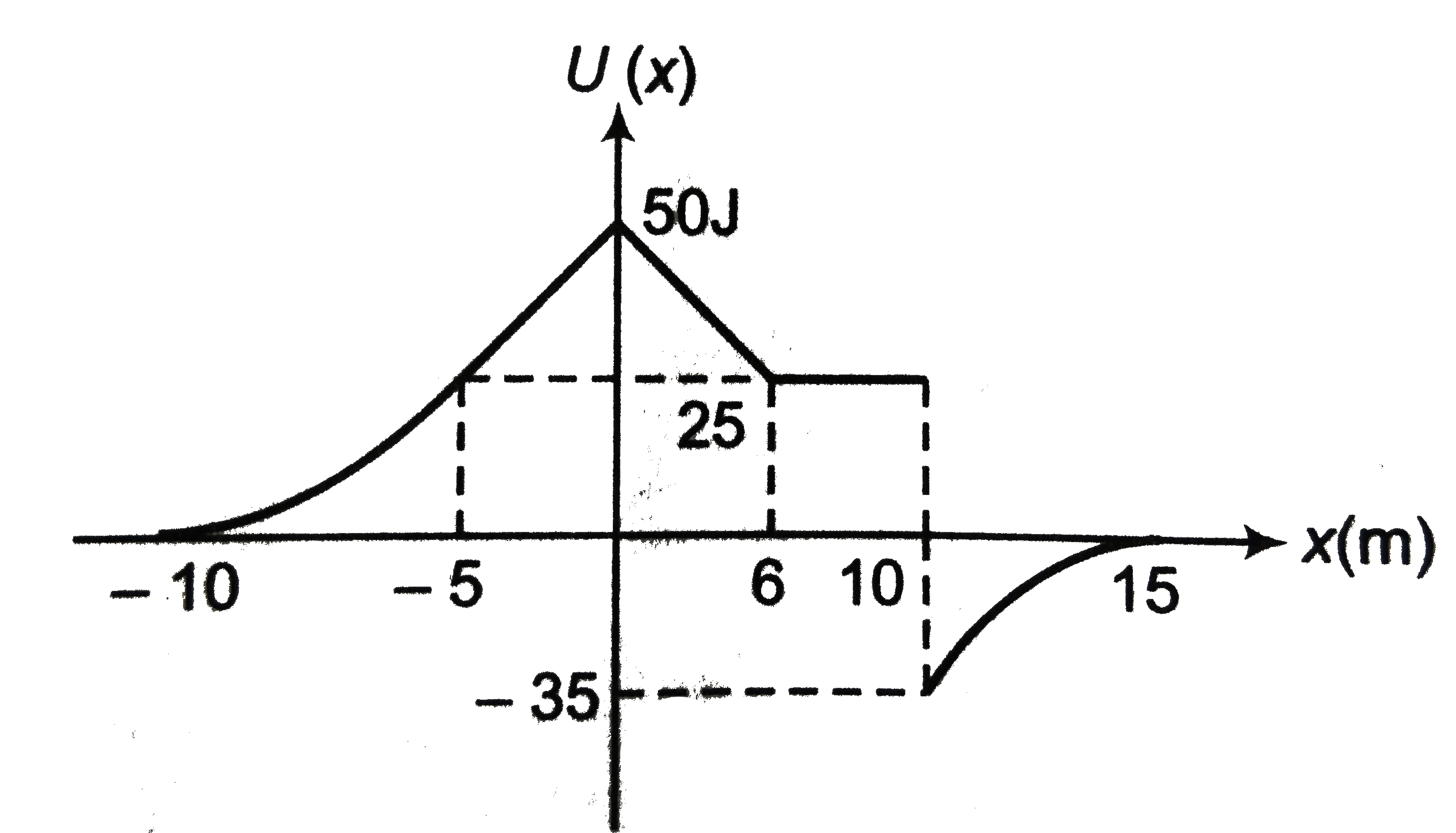
If total mechanical energy of the particle is −40J, then it can be found in region.
x<10 and x>15
−10<x<5 and 6<x<15
10<x<15
It is not possible
The correct Answer is:D
U=E−K=−40−K
Since
K≥0
∴U≤−40J.
Topper's Solved these Questions
- WORK, ENERGY & POWERBook:DC PANDEYChapter:WORK, ENERGY & POWERExercise:Level 2 Subjective
Explore 15 Videos
- WAVE MOTIONBook:DC PANDEYChapter:WAVE MOTIONExercise:Integer Type Question
Explore 11 Videos
- WORK, ENERGY AND POWERBook:DC PANDEYChapter:WORK, ENERGY AND POWERExercise:MEDICAL ENTRACES GALLERY
Explore 33 Videos
Similar Questions
Knowledge Check
The figure shows the variation of potential energy of a particle as a funcation pf x, the x-coordination of the region. It has been assumed that potential energy depends only on x. For all other values x,U is zero. i.e. forx<−10 and x>15,U=0.
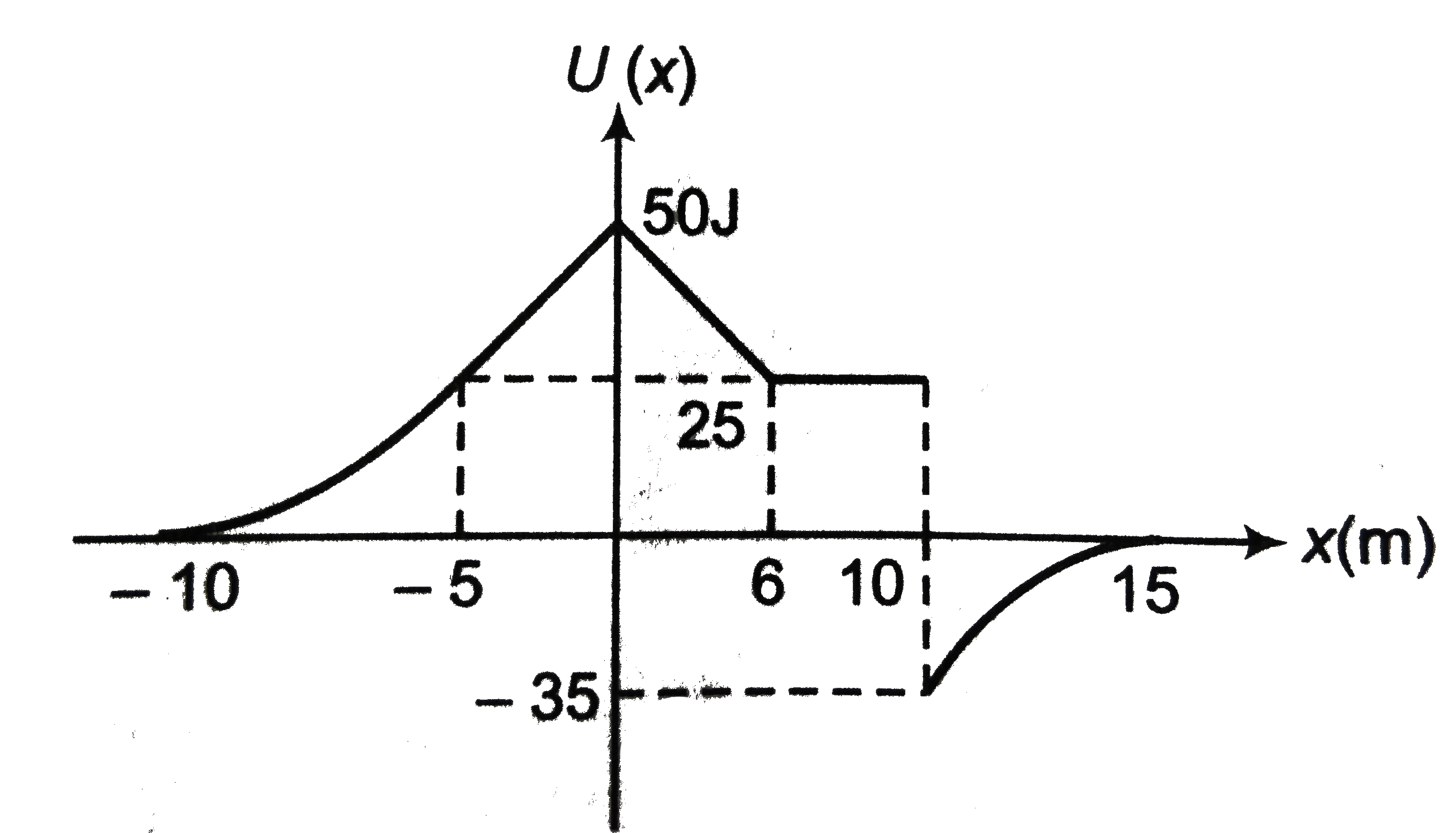
If total mechanical energy of the particle is 25J, then it can found in the regionA−10<x<−5 and 6<x<15B−10<x<0 and 6<x<10C−5<x<6D−10<x<10Figure shows the variation of potential energy of a particle as a function of x, the x-coordinate of the region. It has been assumed that potential energy depends only on x. For all other values of x, U is zero, i.e., x←10 and x>15, U=0.
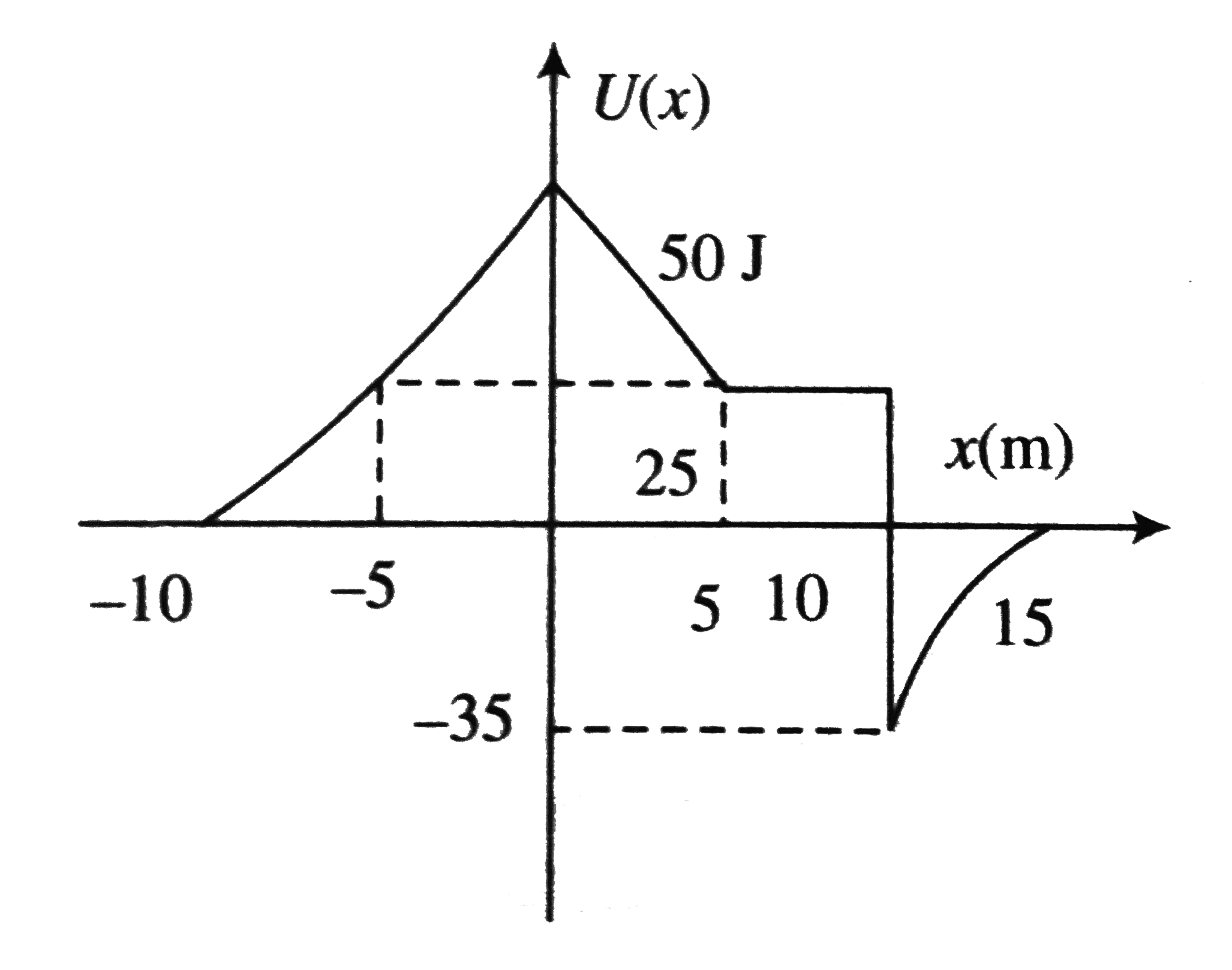
If the total mechanical energy of the particle is −40J, then it can be found in regionA(a) x←10 and x>15B(b) −10<x←5 and 6<x<15C(c) 10<x<15D(d) It is not possibleFigure shows the variation of potential energy of a particle as a function of x, the x-coordinate of the region. It has been assumed that potential energy depends only on x. For all other values of x, U is zero, i.e., x←10 and x>15, U=0.
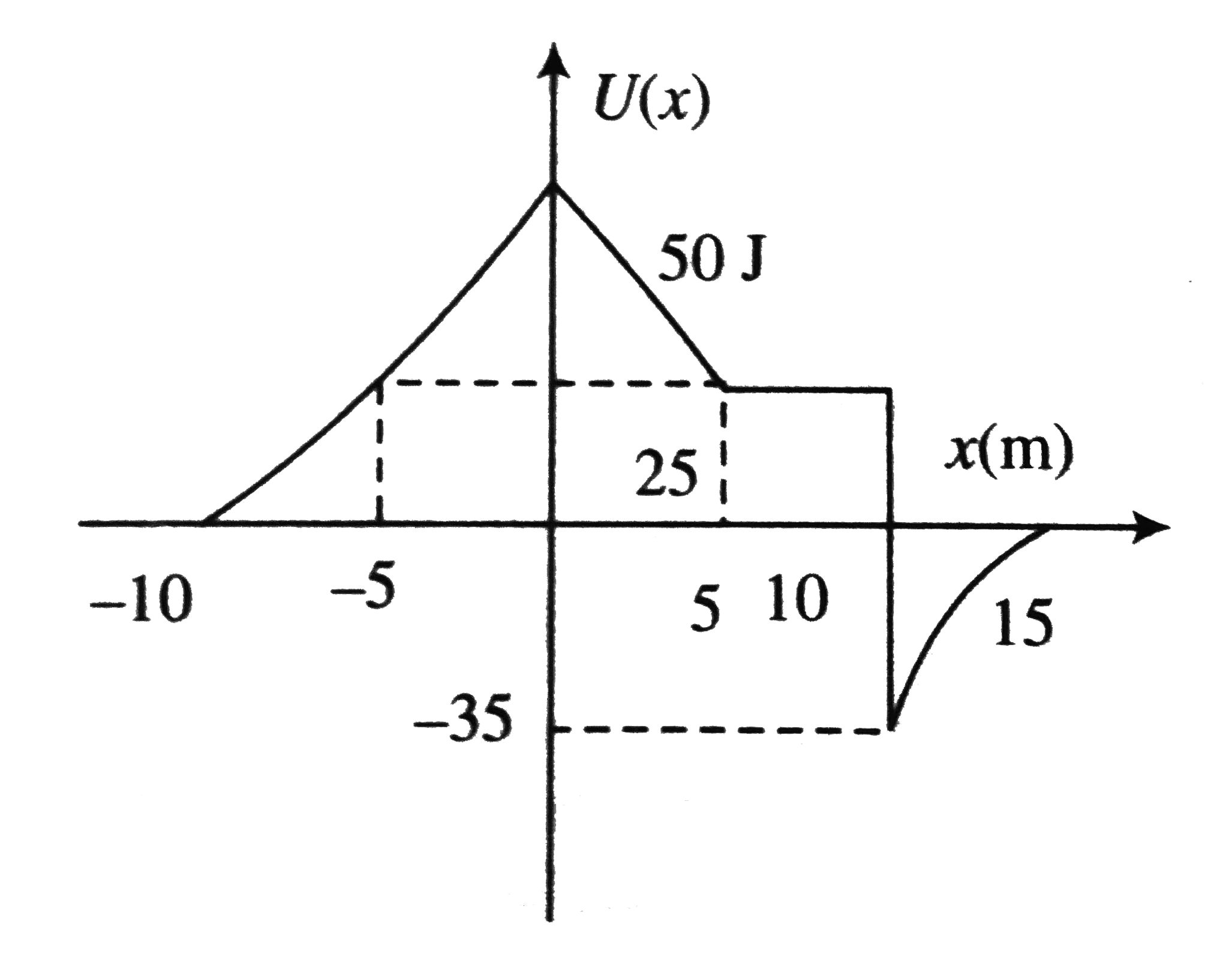
If the particle is isolated and its total mechanical energy is 60J, thenA(a) The particle can be found anywhere from −∞<x<∞.B(b) The particle's maximum kinetic energy is 95J.C(c) The particle's kinetic energy is not getting zeroD(d) All of the above
The potential energy of a particle of mass m is given by U=12kx2 for x<0 and U=0 for x≥0. If total mechanical energy of the particle is E. Then its speed at x=√2Ek is
View SolutionThe following plot shows the variation of potential energy (U) of a system versus position (x). From the graph we can interpret that :

View SolutionThe potential energy of a particle varies with x according to the reltiaon U(x) =x2−4x. The point x =2 is a point of
View SolutionPotential energy curve U of a particle as function of the position of a particle is shown. The particle has total mechanical energy E of 3.0 joules. Then select correct alternative.
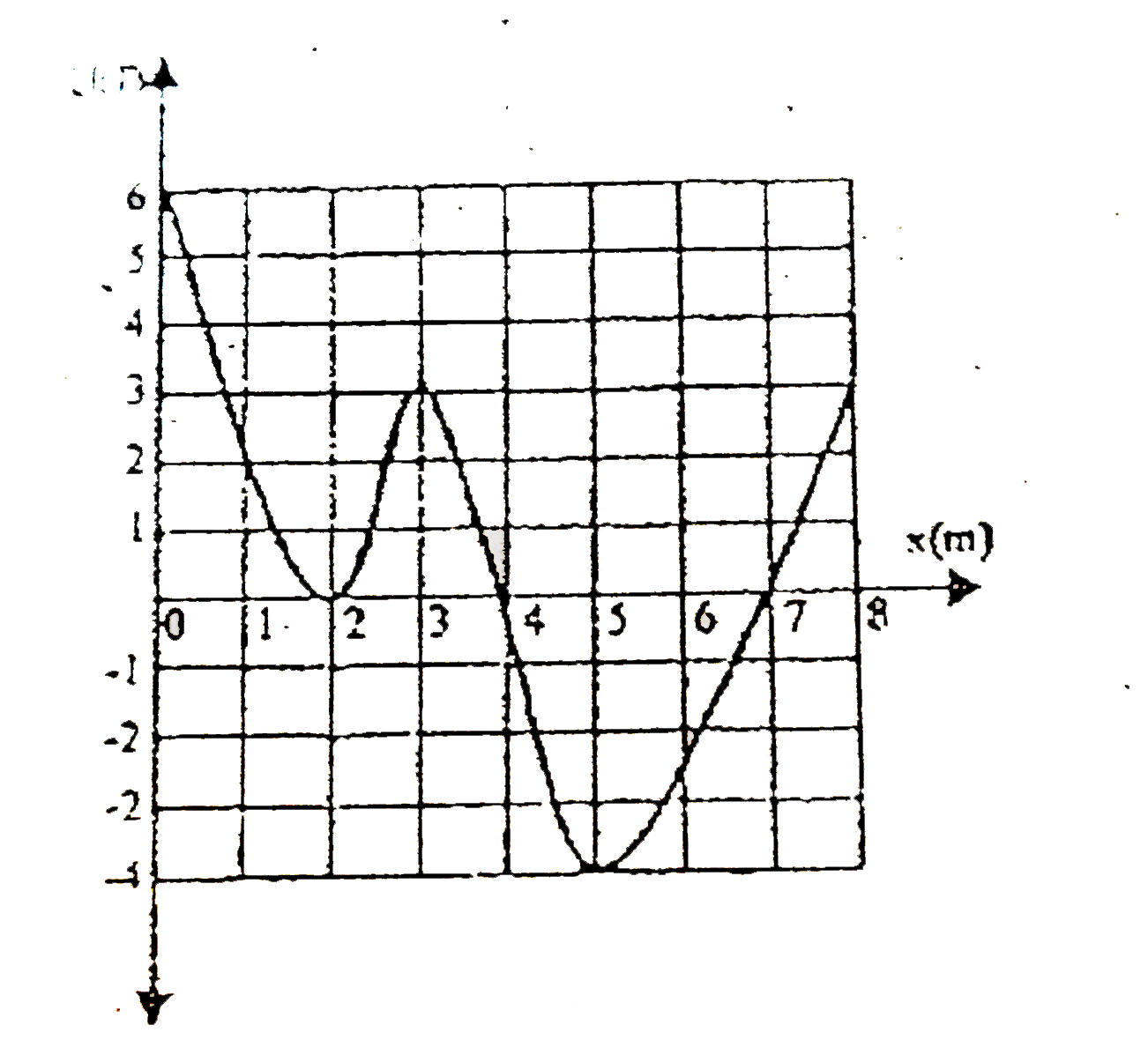
View SolutionThe potential energy of a particle of mass m is given by U=12kx2 for x<0 and U=0 for x≥0. If total mechanical energy of the particle is E. Then its speed at x=√2Ek is
View Solution